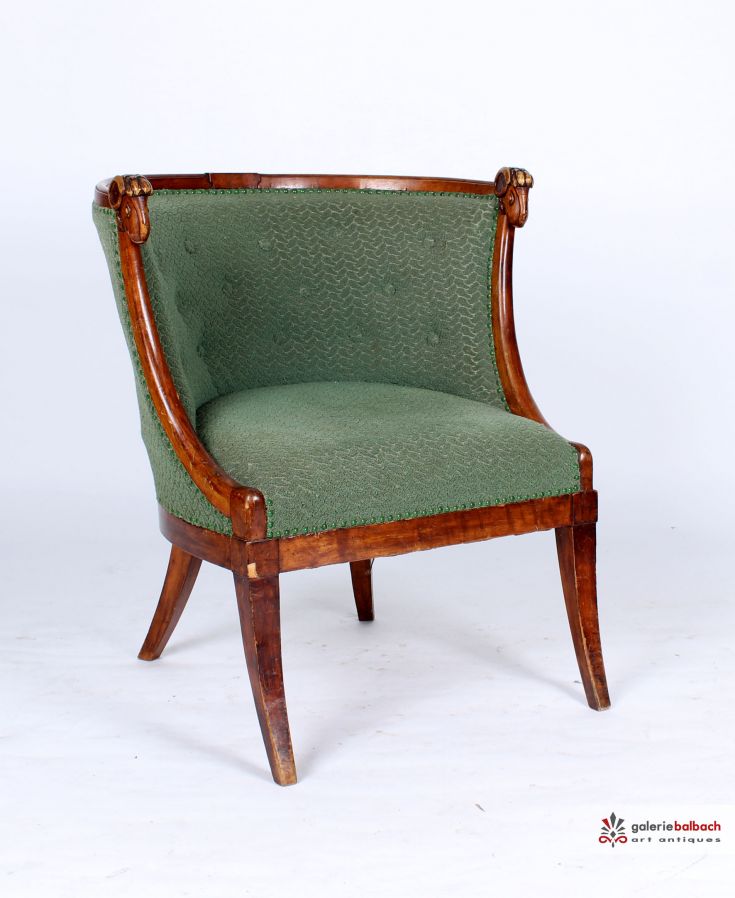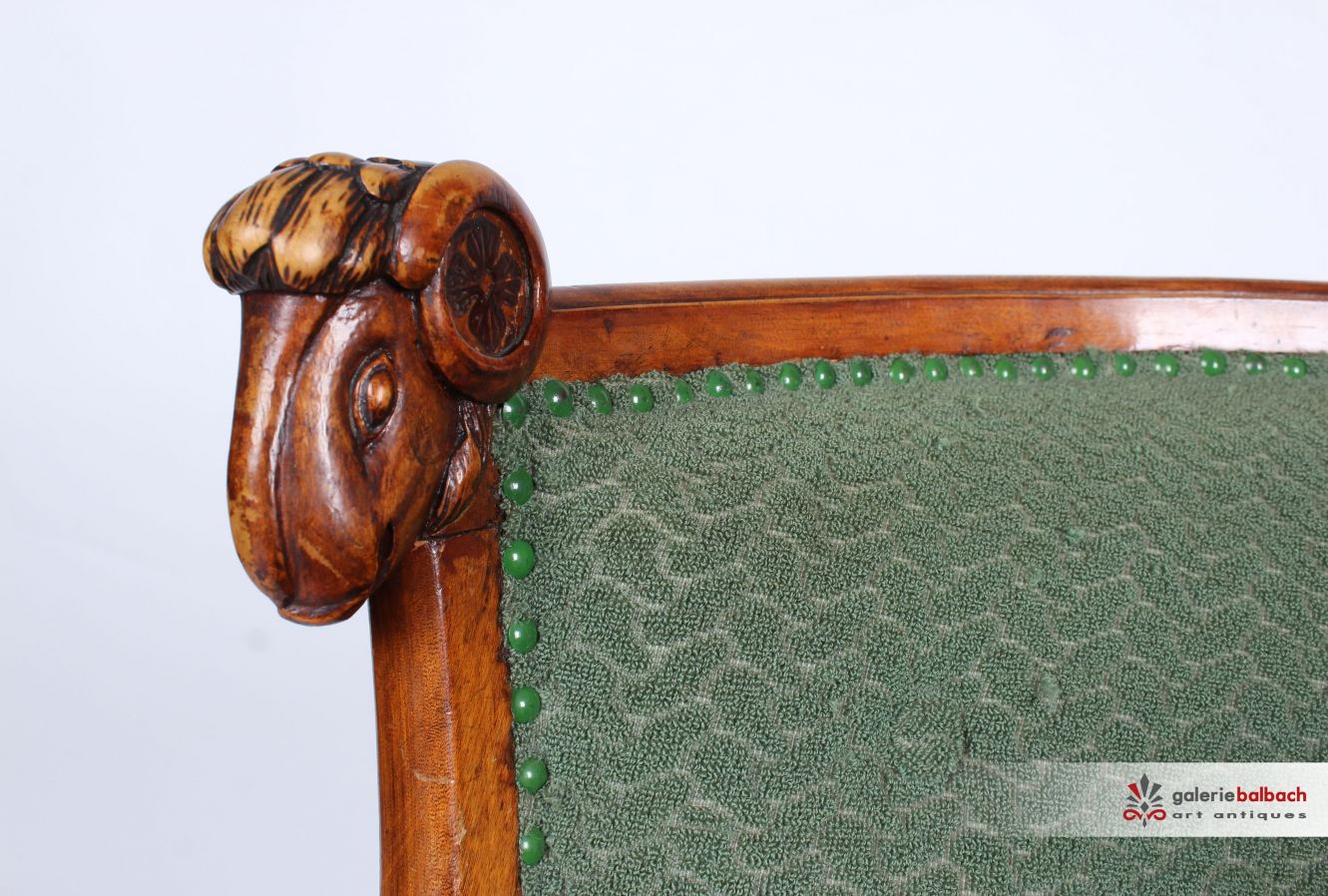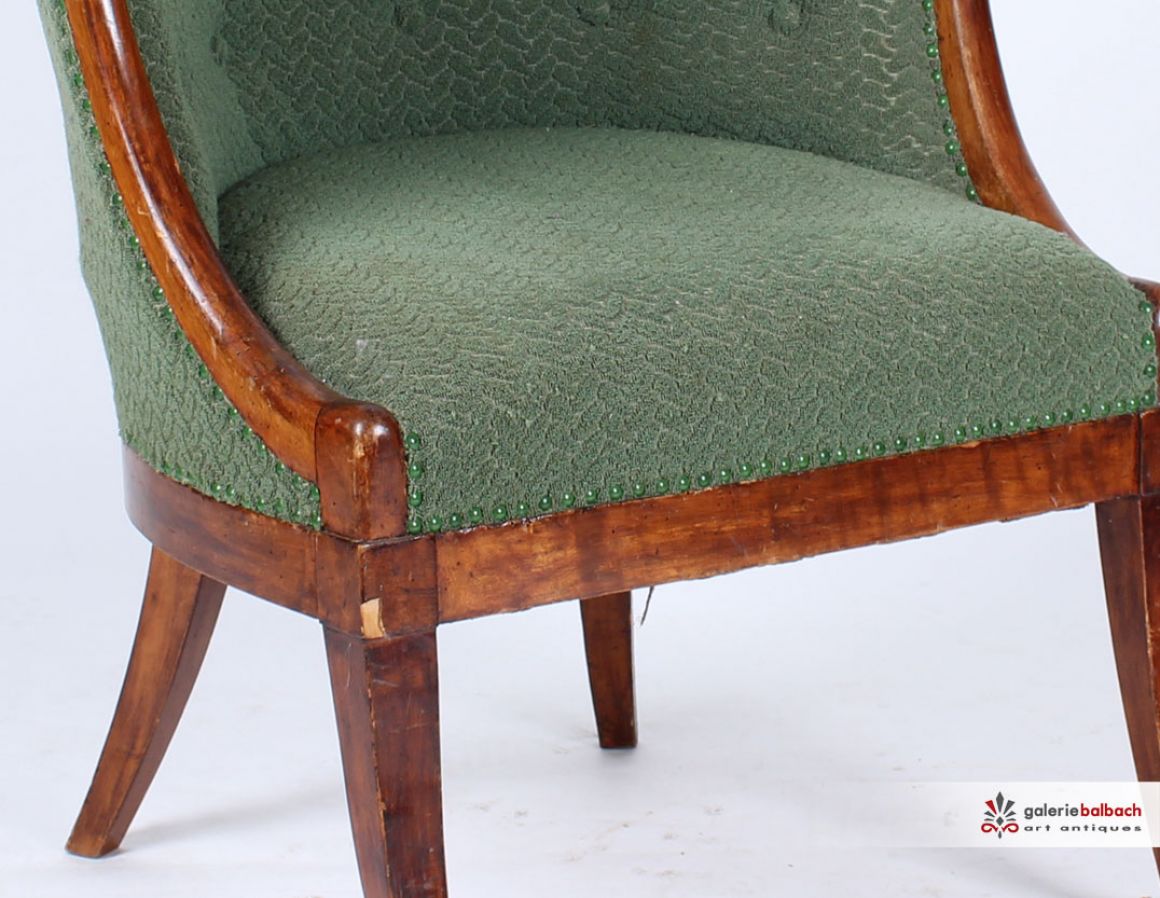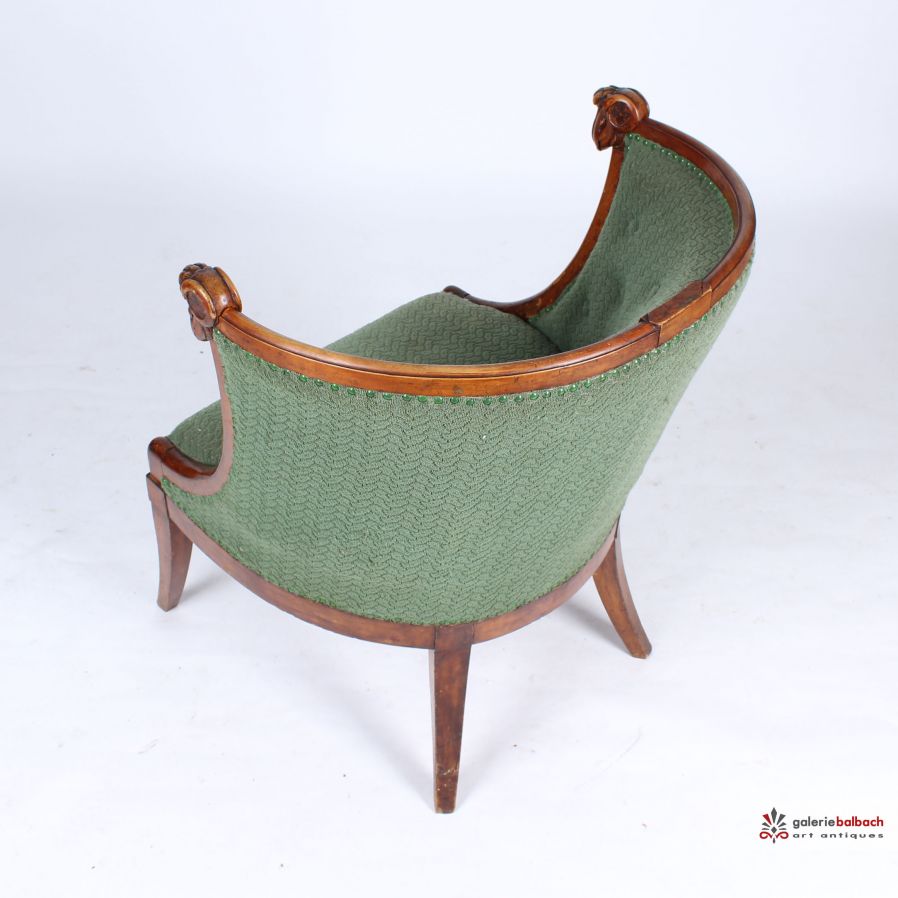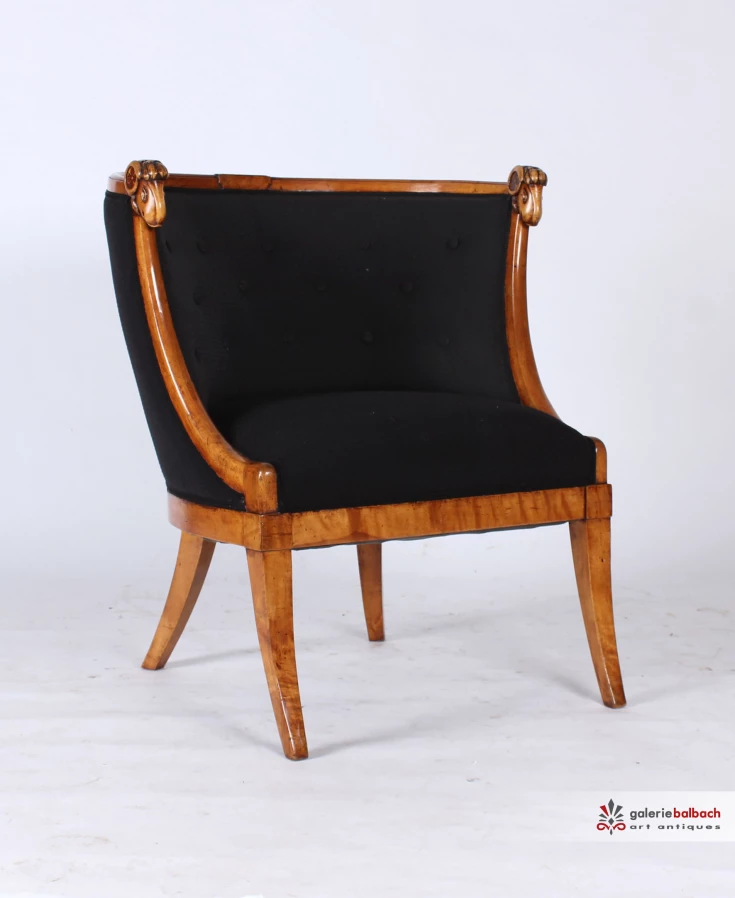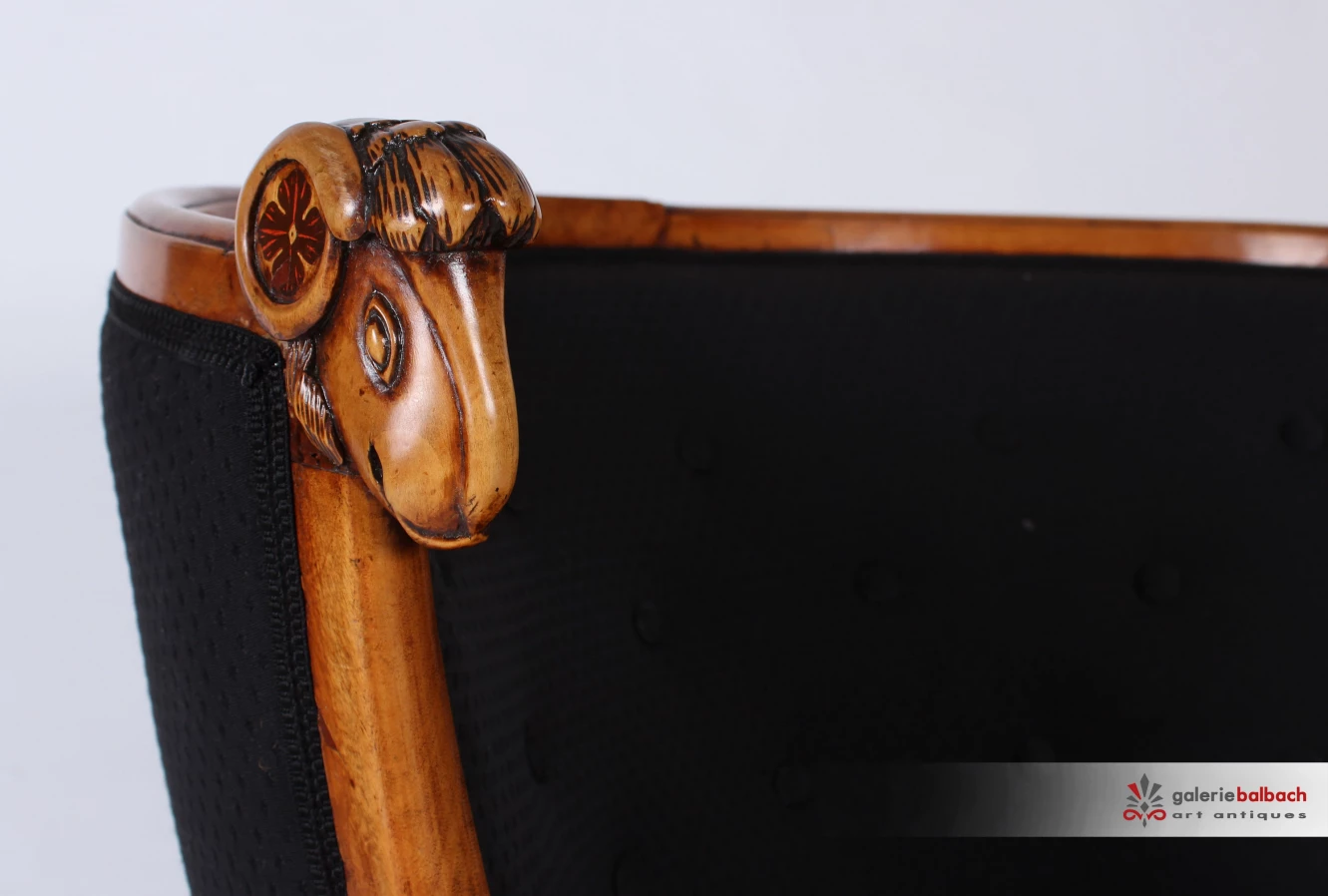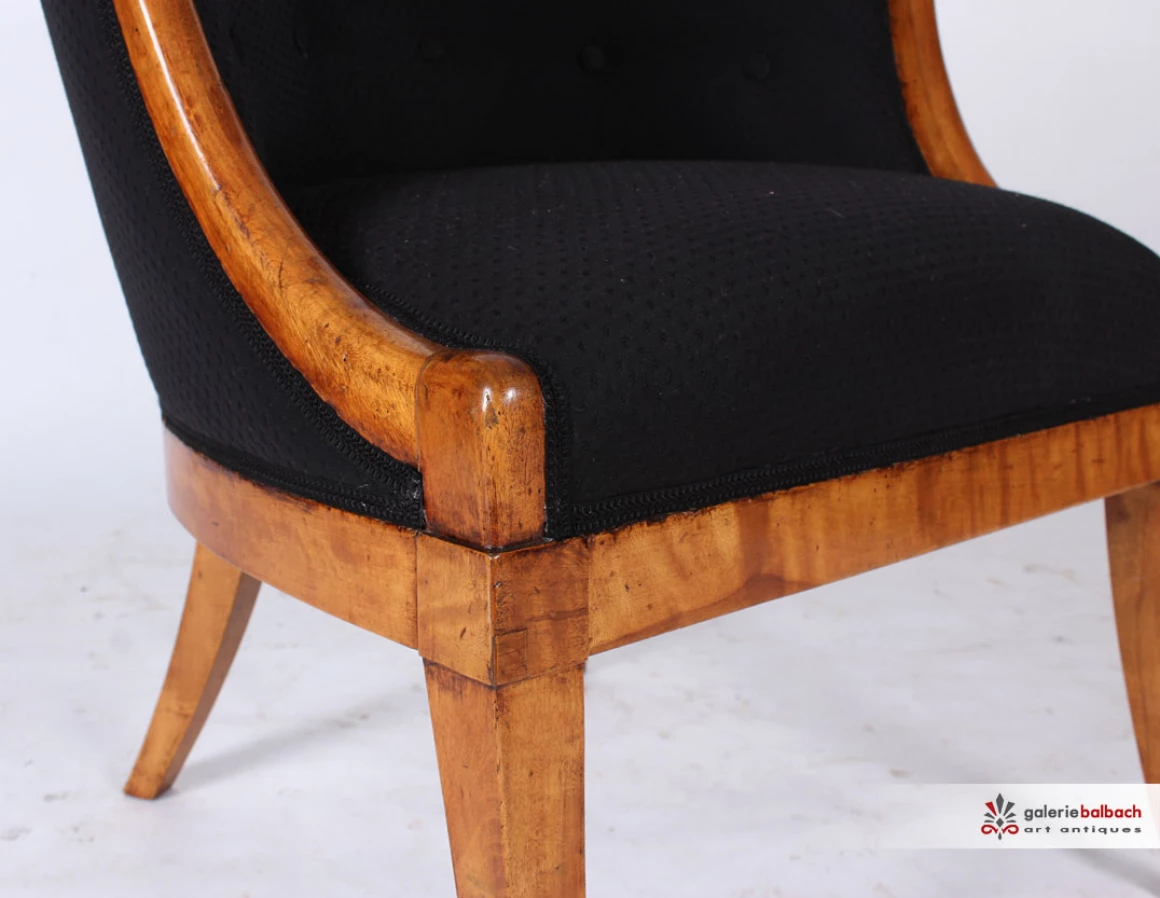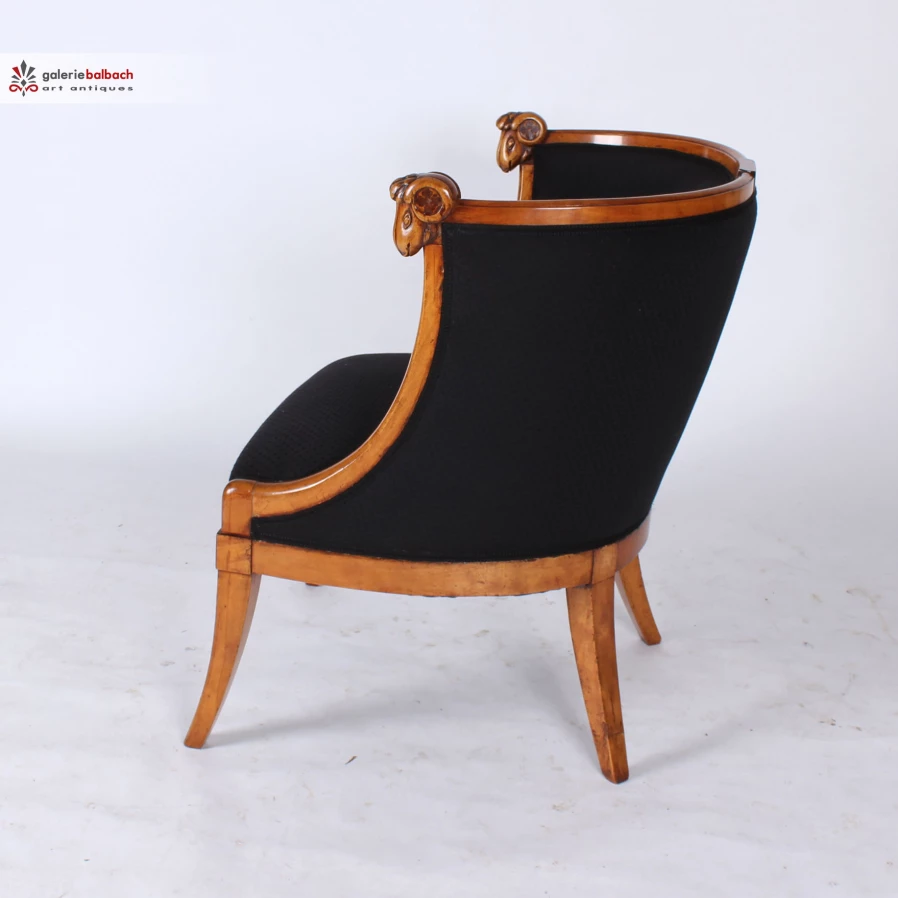Upholstering and reupholstering an antique armchair
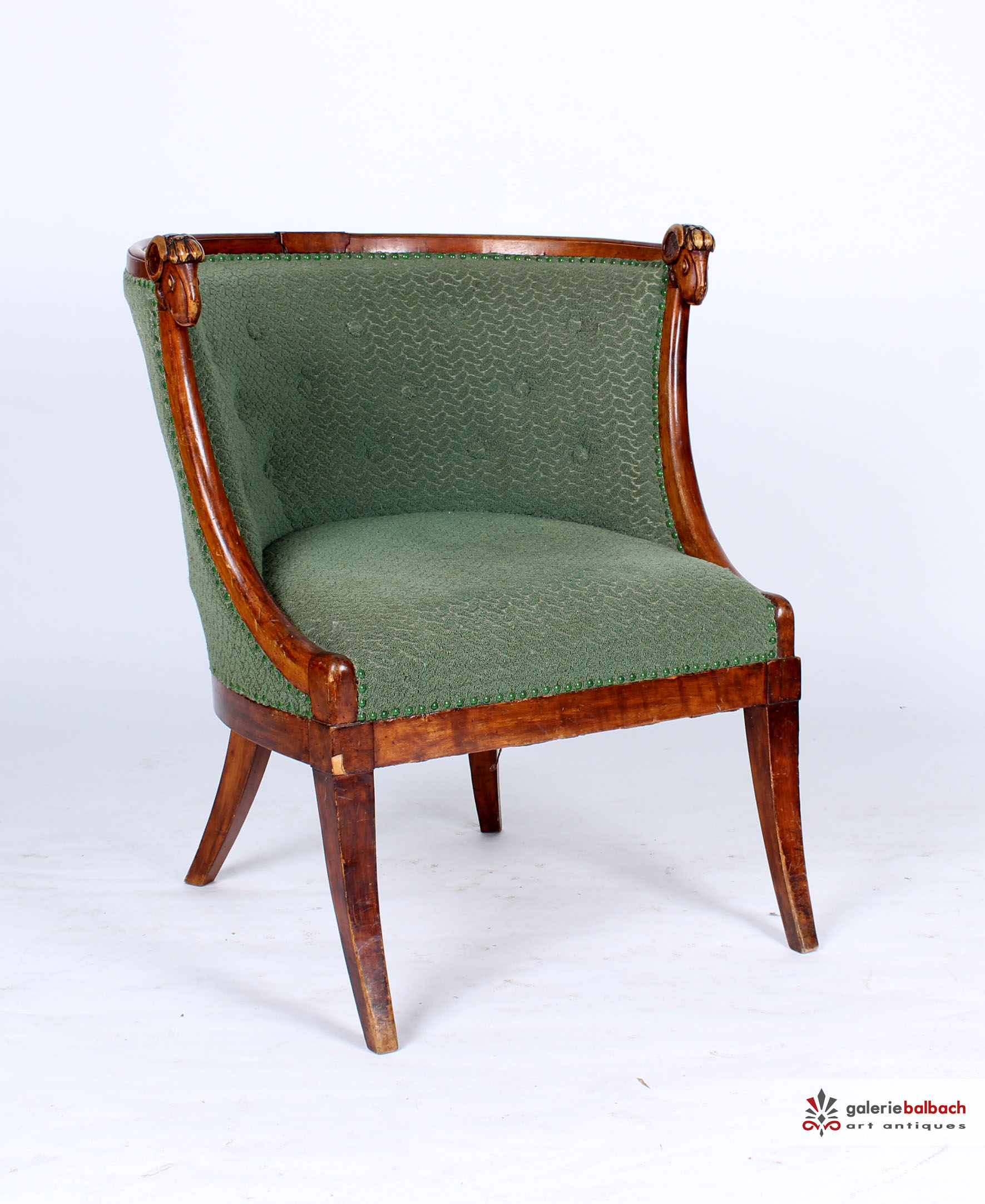 Upholstered furniture should first and foremost be cosy and comfortable. Whoever decides on an antique armchair, however, usually also wants to use it as a design element in the room.
Upholstered furniture should first and foremost be cosy and comfortable. Whoever decides on an antique armchair, however, usually also wants to use it as a design element in the room.
Both the seating comfort and the appearance of the piece of furniture change over the years, and not necessarily for the better. The upholstery can become soft and the springs and straps lose their tension. In addition, there is damage to the wood from cleaning and exposure to light, discolouration, flaking and soiling. Perhaps, after years of use, you no longer like the fabric, which is worn through and out of fashion from the pattern.
Now it is time for a restoration!
An armchair upholstered all around is also called a "bergere".
The piece of furniture described here is a beautiful Empire bergere made of birch wood with carved rams' heads. It was probably made around 1820-1830 in the region of what was then East Prussia, today Poland or the Baltic States.
The solid birch wood of the chair was hardly recognisable as such, as it had been darkened considerably during an earlier restoration, probably by means of a stain mixed with shellac.
In the course of the restoration at that time, the upholstery fabric was also reupholstered. The upholstery itself was still well preserved and stable. The construction of the chair was also still in good order.
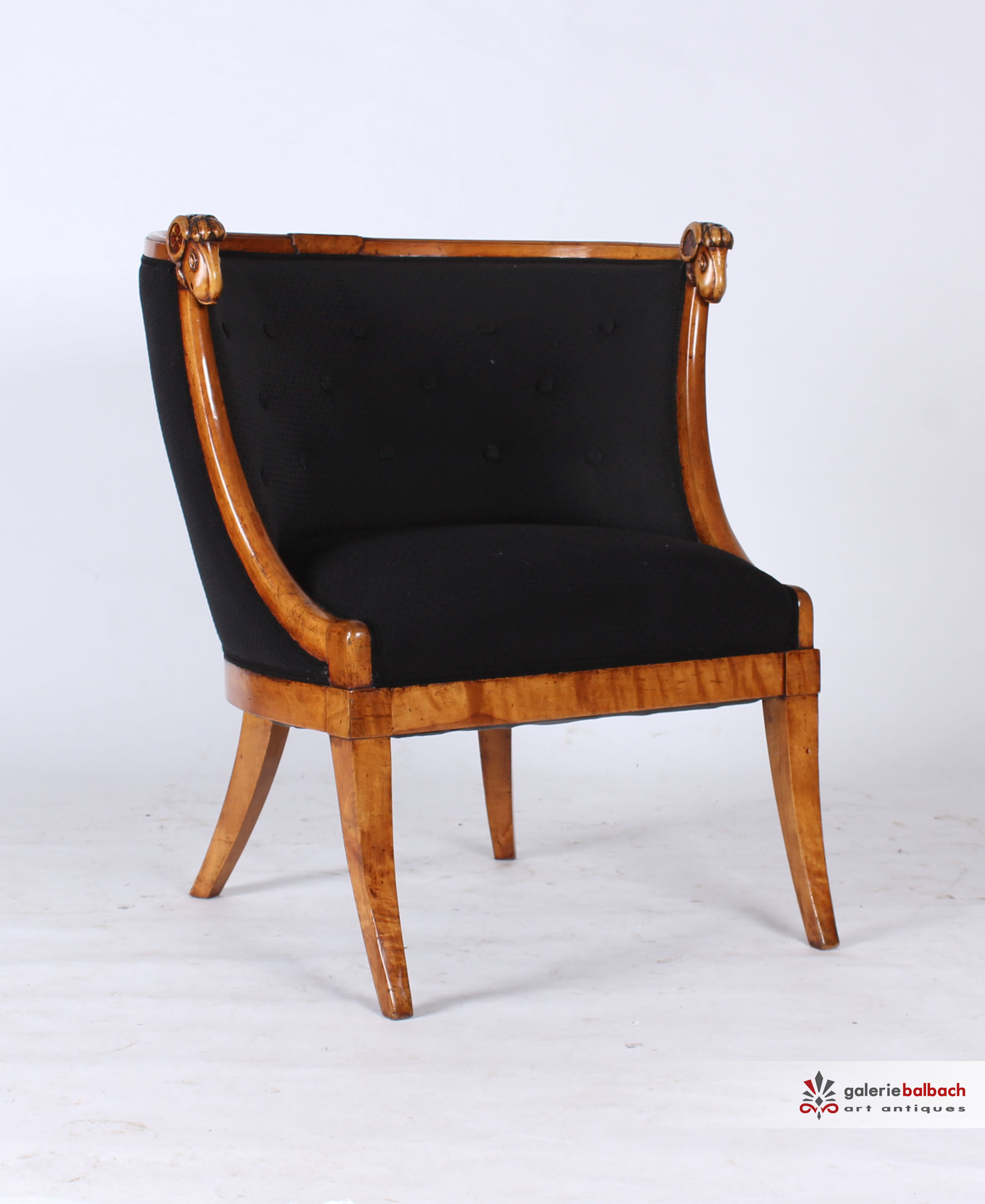 For the customer, it was very important that the armchair should retain its old charm even after restoration. Small irregularities in the wood, the so-called plastic patina, were to be preserved at all costs. A dark upholstery fabric similar to the structure of horsehair was to contrast with the birch wood.
For the customer, it was very important that the armchair should retain its old charm even after restoration. Small irregularities in the wood, the so-called plastic patina, were to be preserved at all costs. A dark upholstery fabric similar to the structure of horsehair was to contrast with the birch wood.
Lightening dark stained wood
In the first step of the restoration, we removed the old shellac with alcohol. For cleaning we use sponges soaked in alcohol, for more heavily soiled areas we use very fine steel wool with a grain size of 00. Carved elements are cleaned with fine brushes. In this way, the birch wood regains its light colour.
After this work was done, we filled spalled areas of the wood with thick saw veneer, and larger dents and cracks were filled. The repaired areas can be colour-matched with diluted stain.
We then sealed the now raw and cleaned wood with a shellac polish. The beauty of a shellac hand polish is that the first layers penetrate the wood. By applying further coats, you achieve the desired degree of gloss. This way, the surface doesn't look like a top coat on top, but it looks as if the wood itself is shining. Very soft and natural. It is simply a beautiful effect and cannot be compared with any sprayed-on varnish. Shellac is also the type of sealant used at the time the piece of furniture was made, so it also fits the armchair perfectly in a historical context.
Which upholsterer restores antique armchairs?
We outsource the upholstery work to an upholstery firm in Münster that has many years of experience with antique seating furniture. We will gladly put you in touch with the upholsterer we trust or take care of the upholstery work for you. This way you continue to have "everything from one source"...
We would also be happy to restore your antique piece of furniture!
Simply contact us via e-mail, SMS or WhatsApp. If you send us some photos of the object to be restored, we can usually give you the approximate restoration costs based on the pictures.
Also interesting
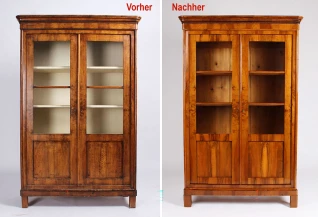
Refurbishment of a Biedermeier bookcase
Old wood in new splendour - Shellac polish makes it possible!
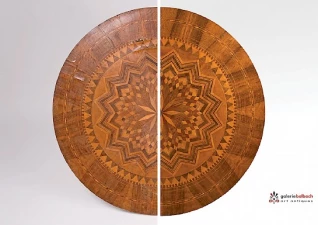
Restoration of a marketing table
Do you also have a piece of furniture in need of restoration? We will take care of it!
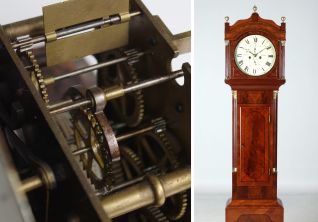
Restoration of an antique grandfather clock
What good is the most beautiful clock if it doesn't run properly?
